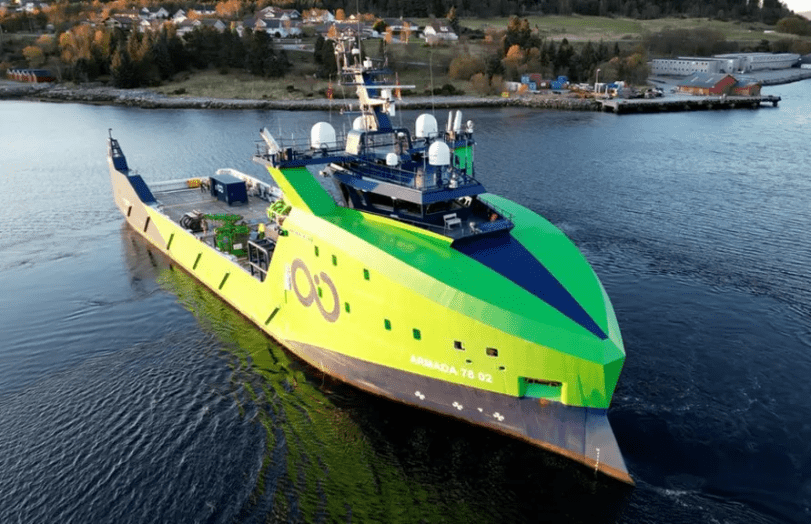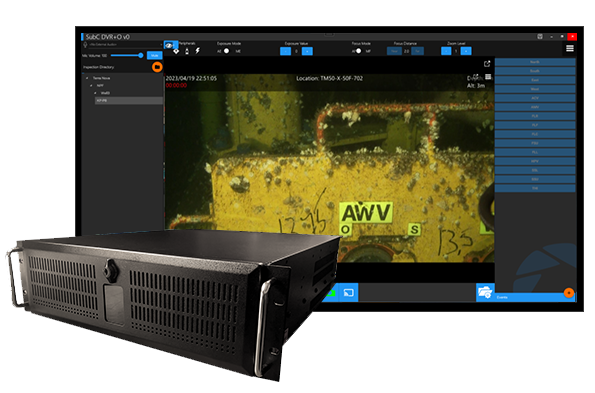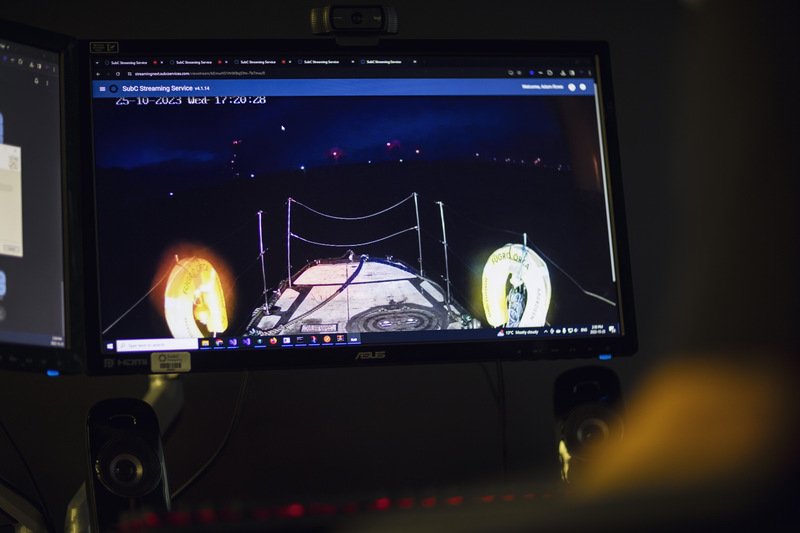Case Study: Subsea DVR Technology for Ocean Infinity Robotic Vessels
Photo credit: BBC/Kevin Church
Ocean Infinity, a pioneer in marine technology and robotic vessel operations, embarked on an ambitious project to enhance its offshore inspection capabilities. Their objective was to utilize remote robotic vessels to conduct subsea inspections, significantly reducing the need for human presence offshore and moving surveyors to onshore locations. This shift not only promised to make operations safer and more cost-effective but also aimed to increase the efficiency and scope of underwater surveys.
Ocean Infinity’s quest to minimize the ecological footprint of oceanic exploration while maximizing data quality necessitated a DVR solution as advanced as their robotic vessels. Their operations, characterized by remote vessels that allow for fewer people to be on the line and surveyors to operate from onshore, required a seamless integration of technology that could support the high demands of remote, automated data collection.
To achieve this, Ocean Infinity required a sophisticated Digital Video Recorder (DVR) system capable of integrating with their new class of robot vessels. The system needed to be versatile, robust, and capable of supporting advanced features like virtual-machine compatibility, multi-camera inputs, overlays, and compatibility with Aize’s Coabis and Integrity Elements for comprehensive asset integrity management.
The Challenge & Key Requirements
Ocean Infinity came to Subc Imaging with several key challenges in implementing their vision for a DVR solution. To align with their pioneering robotic vessel operations, Ocean Infinity outlined several key requirements:
1. Virtual Machine Compatibility
The DVR solution had to be operable on virtual machines to ensure flexibility and scalability in deployment. Read more about the significance of virtual machine compatibility for DVR systems.
2. IP Stream Input
Given the networked nature of robotic vessels, the system required the capability to handle IP stream inputs efficiently.
3. Integration with Control System & Asset Integrity Software
It was essential for streamlined project management and data analysis for the DVR to work seamlessly with Ocean Infinity’s control system, Aize’s Coabis, and other asset integrity software.
4. Channel Flexibility
To accommodate diverse survey requirements, the system needed flexibility in the number of camera channels per DVR.
5. Overlay and Reporting
Recording surveys with overlays for date-time, sensor data, and company logos, along with sophisticated data logging and eventing, was crucial.
6. Quick Delivery
The timeline for deployment was tight, necessitating a rapid turnaround from concept to implementation.
The Solution
SubC Imaging responded to Ocean Infinity’s requirements with its DVR with Overlay (DVR+O). This system was designed to be highly adaptable, meeting all of Ocean Infinity’s key requirements:
✅ Virtual Machine Environment Compatibility
Ensuring the DVR could run seamlessly on virtual machines, providing the flexibility required for remote operations.
✅ Multi-Camera Input and Overlay Capability
The system supported up to six camera channels with inputs and outputs for composite, up to two 4K channels, HD, IP, and SD video cameras, enhancing the detail and quality of the recorded data.
The DVR+O system's overlay functionality is not merely an additive feature; it is a transformative tool that enriches the data's context and integrity. By integrating date, time, sensor data, and company logos directly onto the video footage, Ocean Infinity's project data is improved:
Data Richness: Overlays add a layer of valuable information, making each piece of footage a comprehensive data point.
Project Integrity: The direct link between visual records and contextual data ensures verifiable accuracy and integrity.
Enhanced Analysis: Real-time data overlays facilitate deeper analysis and understanding, enabling more informed decision-making.
✅ Software & Control System Integration
The DVR+ Overlay system was fully compatible with Aize’s Coabis and Integrity Elements, facilitating integrated asset integrity management. Plus the open API allows for control system integration.
✅ Speedy Implementation
SubC Imaging prioritized quick delivery, ensuring Ocean Infinity could deploy the solution within their tight timelines.
The Impact
The implementation of SubC’s DVR+O system has significantly advanced Ocean Infinity’s capabilities in conducting offshore inspections with robotic vessels. This technological integration has yielded several key outcomes, including enhanced safety and efficiency. The transition to robotic vessels, bolstered by SubC’s innovative technology, has notably reduced the need for human presence offshore, consequently enhancing safety protocols and operational efficiency.
The DVR+O system's multi-camera input and overlay capabilities have revolutionized Ocean Infinity's data acquisition processes. By enabling the capture of detailed, high-quality video data, this technology has become instrumental in facilitating accurate inspections and surveys, thus elevating the overall quality of gathered information.
In addition to data enhancement, the integration of SubC's technology with Ocean Infinity’s control system, and Aize’s Coabis and Integrity Elements has brought about seamless project management for Ocean Infinity. This integration has streamlined the management of ROV inspections and underwater surveys, optimizing project workflows and ultimately improving project outcomes.
Furthermore, the rapid delivery and implementation of the DVR+O system underscore SubC Imaging’s commitment to meeting Ocean Infinity’s operational timelines. This swift deployment not only showcases the efficiency of SubC’s solutions but also highlights the company's dedication to addressing customer needs promptly and effectively.
Conclusion
Ocean Infinity’s collaboration with SubC Imaging to deploy a cutting-edge DVR system for its robotic ships represents how innovative solutions can transform operational processes. As the marine industry strives to be safer, more efficient, and cost-effective, partnerships like this will pave the way for further advancements, setting new standards for remote and robotic offshore inspections.



